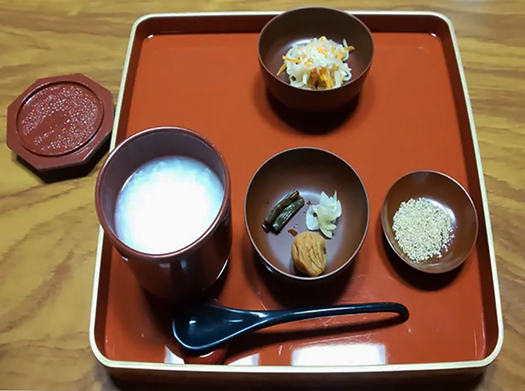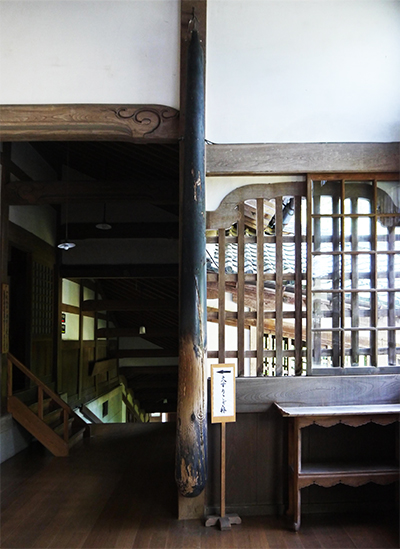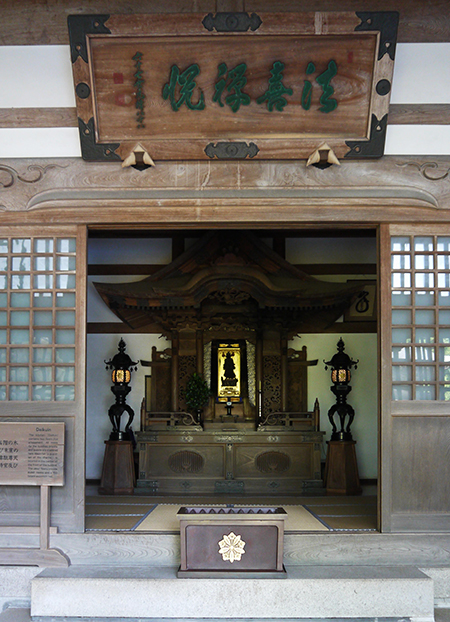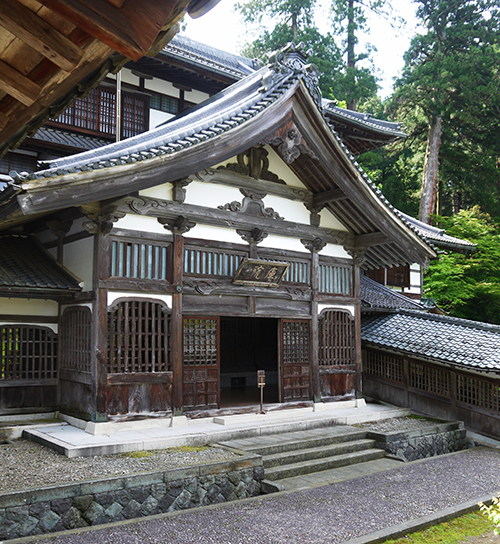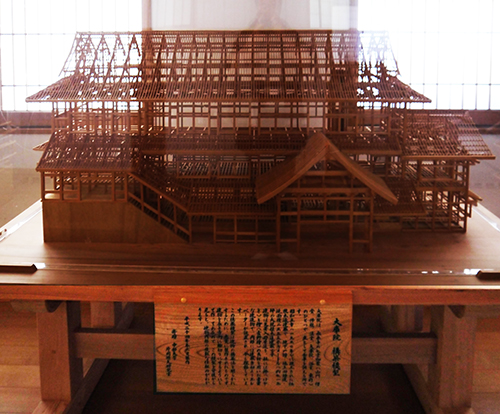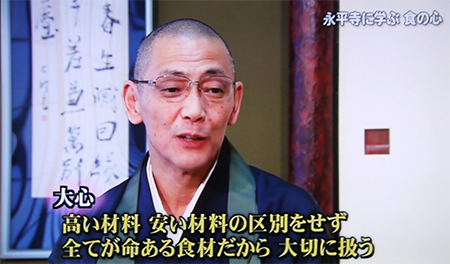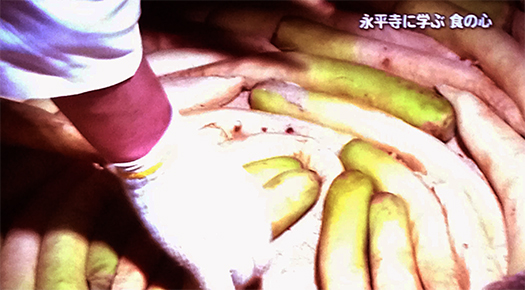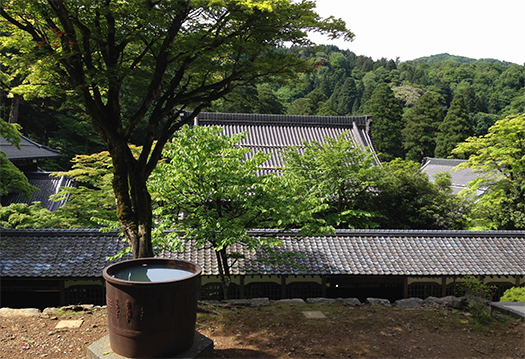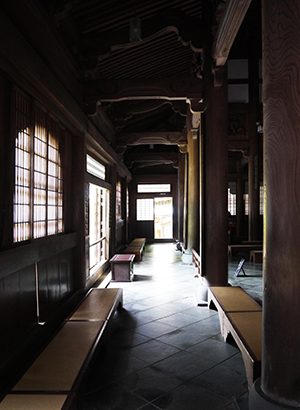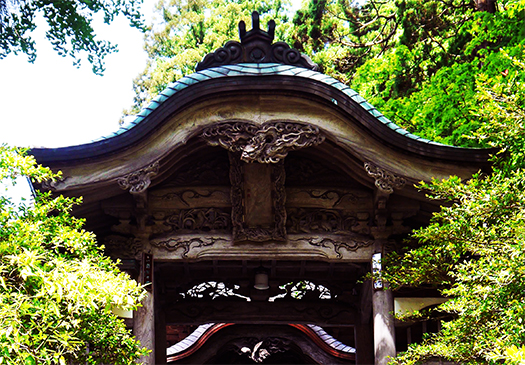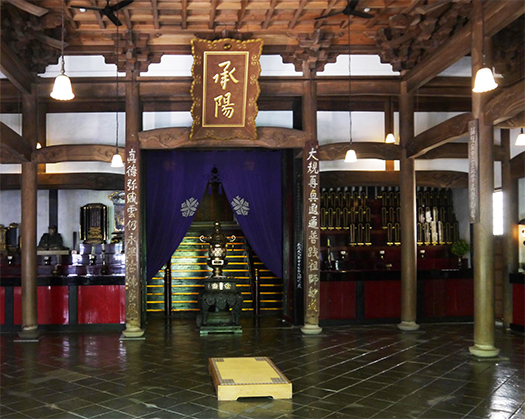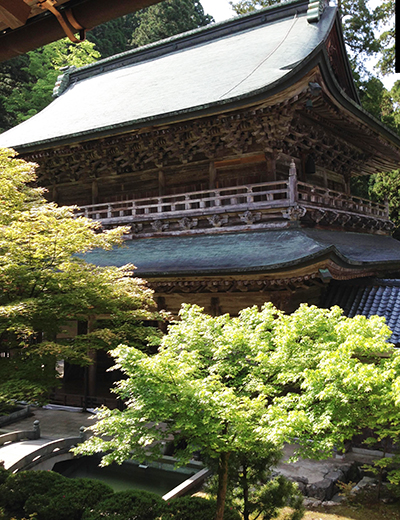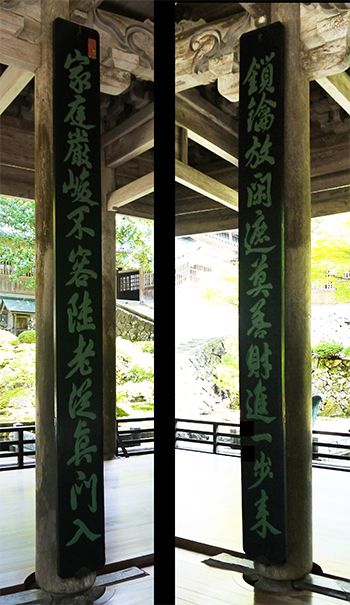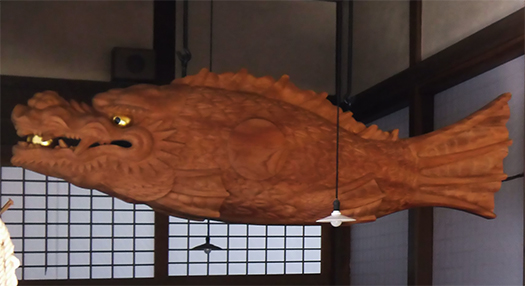
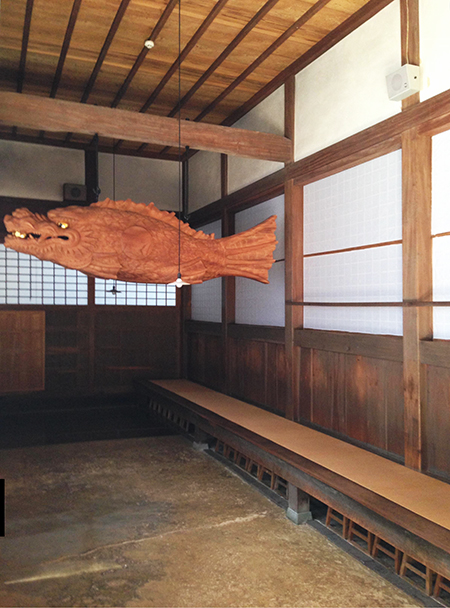
永平寺は禅の道場なので、僧堂と呼ばれる堂社がその中枢。
参観すると時間によっては僧侶さんたちの座禅の様子が見られたりする。
よく見る様子であって、自然にこちら側も身がシャンとさせられる。
ところが永平寺のなかでも目を抜いて迫ってくるのがこの木魚。
座禅の空間の外側、休息所なのか前室なのか、
ベンチのある前室空間のやや高い位置に配置されている。
全景写真の方では照明も映っているので高さ、大きさもわかると思います。
「木魚」となにげに見たまんまで書きましたが、
一般的には読経のお供で「ポクポク」と伴奏する役割。
しかしここは座禅の場なのでそういった用途ではなさそう。
実際に使われている状況を目撃していないので不明です。
ただし、木魚のおなかのあたりに補強痕跡があり
その位置付近を打撃して音を発生させるのが機能で間違いはなさそう。
だとすると、座禅の時間を堂内に告知するための装置のようにも考えられる。
で、面白みを感じるのがその魚種というか、怖ろしげなる目元。
どうも見た感じはシーラカンスか。
いかにも「偈」を下されそうな恐怖の大王的な印象。
だけれどもカラダはいかにも魚体そのものなのでかわいい。
こういうアンバランスの表現感覚にはどうも一本取られる。
参りました、仰せのごとくに致します的な納得感がある。
〜木魚は読経で打ち鳴らしてリズムを整える。また眠気覚ましの意味もあり、
木魚が魚を模すのは、眠るときも目を閉じない魚が
かつて眠らないものだと信じられていたことに由来する。〜というのが一般知。
以下、Wikipediaの記述の一部にはこういう箇所も見られる。
〜木魚の原型は禅寺で使われていた「魚板」(魚鼓)。黄檗宗の本山である
黄檗山萬福寺や護国山東光寺、韓国の寺院などで見ることができる。
魚板とはその名の通り魚の形をした板であり、午前11時45分にだけ鳴らされる。
魚の形をしているのは、魚は日夜を問わず目を閉じないことから、
寝る間を惜しんで修行に精進しなさいという意味である。
口にくわえた丸いものは煩悩を表し叩くことで吐き出させるという意味。〜
っていうことですが、この木魚に託された煩悩は相当深く深刻にみえる(笑)。
さすがに禅の道場なので、深遠な人間の業の深さを思えば、
このような魔物のようなシーラカンス級のお姿がふさわしいのでしょうか。
おっかなそうだけれど、面白い。

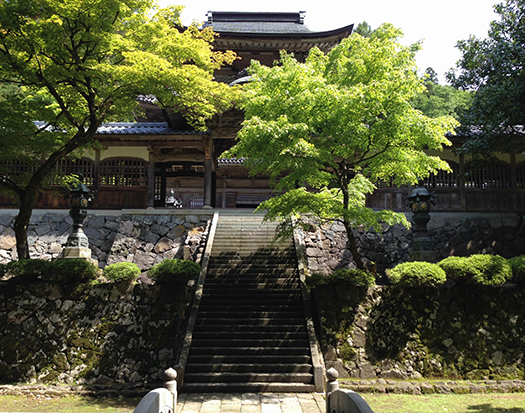
こうやって日本の仏教寺院を巡るブログシリーズをやっていると
これはこれで参観の追体験になっていて、仏を思い彷徨うひとつの道ではとも思う。
もちろん衆生の身なので調子外れだったり、トンチンカンであることは
重々わかっていますが、WEBという環境を活かして
仏について考えるひとつのルートではないかと思い始めてきております。
南無大師遍照金剛、南無大師遍照金剛・・・。
English version⬇
[Zendo Monastery and Mokugyo Eiheiji-14]
Eiheiji is a Zen dojo, so a shrine called a monastery is the center of it.
Depending on the time, you can see the meditation of the monks.
It looks like you look closely, and naturally this side also makes you feel like a shan.
However, it is this mokugyo that stands out and approaches even in Eiheiji.
Outside the zazen space, whether it is a resting place or an anterior room,
It is located at a slightly higher position in the front room space where the bench is located.
In the panoramic photograph, the lighting is also reflected, so you can see the positional relationship.
I wrote “Mokugyo” as I saw it, but
Generally, the role of accompaniment with “pokupoku” as a companion to the sutra chanting.
However, since this is a place for zazen, it does not seem to be used for such purposes.
It is unknown because I have not witnessed the situation where it is actually used.
However, there are traces of reinforcement around the tummy of the mokugyo.
It seems that there is no mistake in the function to generate a sound by hitting the vicinity of that position.
If so, it can be thought of as a device for notifying the hall of zazen time.
And what I find interesting is the fish species, or the scary eyes.
Does it look like a coelacanth?
A great impression of fear that seems to be given a “偈”.
However, the body is really a fish itself, so it’s cute.
This kind of unbalanced expression sense is taken by one.
I’m here, I’m sorry to say that, I have a sense of conviction.
~ The mokugyo adjusts the rhythm by striking it with sutra chanting. It also has the meaning of drowsiness.
The mokugyo imitates a fish because it does not close its eyes even when it sleeps.
It comes from what was once believed to never sleep. It is common knowledge that.
Below, such a part can be seen in a part of the description of Wikipedia.
-The prototype of the mokugyo is the “fish plate” (fish drum) used in Zen temples. This is the head temple of the Obaku sect
It can be seen at Obakusan Mampukuji Temple, Gokokusan Tokoji Temple, and Korean temples.
As the name implies, a fish board is a fish-shaped board that is currently ringing only at 11:45 am.
The shape of the fish is because the fish do not close their eyes day and night.
It means to spare time while sleeping and devote yourself to training.
The round object in the mouth expresses anxiety and means that it is spit out by hitting it. ~
That being said, the anxieties entrusted to this mokugyo seem to be quite deep and serious (laughs).
It’s a Zen dojo, so if you think about the depth of human work,
Is such a monster-like coelacanth-class figure suitable?
It sounds funny, but it’s interesting.
When I’m doing a blog series about Japanese Buddhist temples like this
This is a re-experience of the visit, and I think it is one way to wander around the Buddha.
Of course, because I am a sentient being, I can’t be out of tune or be a tonchinkan.
I know it very well, but taking advantage of the environment of the WEB
I’m starting to think that it’s one route to think about Buddha.
Nanmu Daishi Hensho Kongo, Nanmu Daishi Hensho Kongo …
Posted on 12月 11th, 2021 by 三木 奎吾
Filed under: 住宅マーケティング, 日本社会・文化研究 | No Comments »





